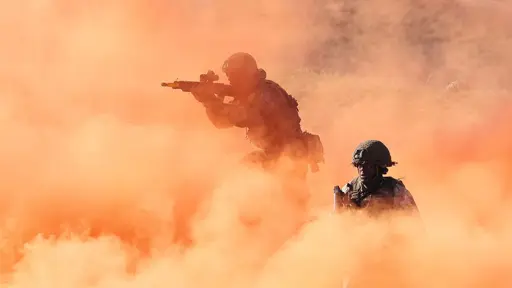In truth, it could take a decade before Europe is able to defend itself without America’s help. To understand Europe’s challenge, start with the debate over Ukraine. European countries are currently discussing the prospect of a military deployment in Ukraine to enforce any future peace deal. The talks, which are being led by France and Britain, envisage sending a relatively modest force, of perhaps low tens of thousands of troops. They would not be deployed in the east at the front line, but to Ukrainian cities, ports, nuclear power plants and other critical national infrastructure, according to a Western official.
Any such deployment would, however, expose three serious weaknesses. One is that it would stretch European forces thin. There are approximately 230 Russian and Ukrainian brigades in Ukraine, though most are understrength. Many European countries would struggle to produce one combat-capable brigade each. Second, it would open up serious gaps in Europe’s own defences. A British deployment to Ukraine, for instance, would probably swallow up units currently earmarked as high-readiness and reserve forces for nato, leaving holes in the alliance’s war plans. Above all, the Europeans acknowledge that any deployment would need significant American support not only in the form of specific “enablers”, such as intelligence and air-defence assets, but also the promise of back-up should Russia attack.
Mirror: https://archive.is/tyyvg



While i don’t doubt the superior quality of equipment like tanks and planes, i am not sure how much munitions are available and how much can be produced in time. IIRC there were estimates that for the summer 2022 fighting level the entire stockpile of Artillery shells of the UK would last like two days if Ukraine was to use it exclusively.
For the whole German debate around Taurus missiles one credible argument was that Germany won’t send any, because Germany would only have a few dozen of them.
Of course combining the stockpiles and production capabilities across Europe should amount to a bit more, but i don’t think that “turning every vehicle and building in camo between the Kyiv and Moscow into a crater in a series of “calm and rational, surgical strikes”” can be pulled off just like this with the available munitions.
What seems to be often overlooked in the realm of weapon’s production, is that Europe is currently running on a “Whatever gives to most profit” system. There won’t be a new production line set up without optimizing cost-benefit and ensuring it’s most efficiently made.
Russia and Ukraine have been in the “Don’t give a shit, make shells in your garden shed if you have to” method of war production for years now. Meaning in Europe there isn’t a single converted factory, not even a hint of pressing civilian forges into making armor and not one fewer car produced in favor of a military truck.
Yes, it will take time to move to war production, and it’s always better to prepare than to play catchup. But you can’t compare the two methods.
I have no doubt that if Europe is threatened they can seriously ramp up the production of military equipment.
I don’t have experience with ammunition or things like that but I know for example that a lot of parts for airplane engines are manufactured in factory where both military and civilian parts are produced.
Meaning that if you delay or lower the production of civilian parts you have a lot of extra manufacturing capabilities available immediately for these parts.
Then you can start covering factories, this takes longer ,even during war time, but having a big automobile and aerospace industry means that there are industrial capabilities to mass manufacture equipment that could be used for military purposes.
It helps that Russia’s own equipment is mostly scrap in Ukraine already.